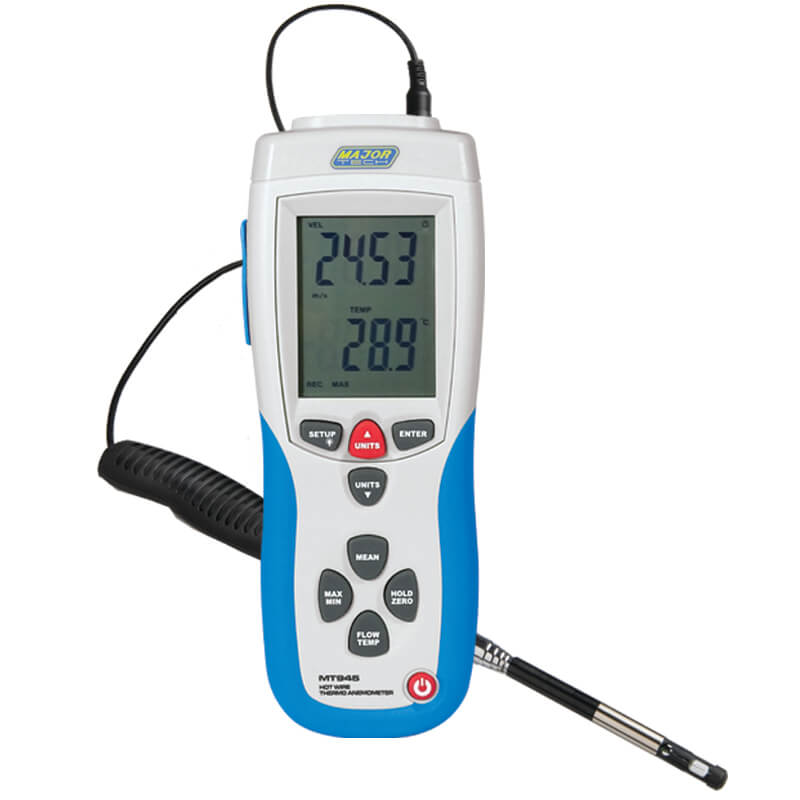Top Attributes to Seek in an Efficient Anemometer for Accurate Wind Dimension
Top Attributes to Seek in an Efficient Anemometer for Accurate Wind Dimension
Blog Article
Anemometers Unveiled: Understanding Their Importance in Ecological Tracking and Precaution
The function of anemometers in environmental surveillance and security actions is commonly ignored, yet their value is obvious. These instruments have a long background rooted in scientific query and technological improvements, advancing to end up being vital tools in different fields. From weather forecasting to aeronautics safety and security, anemometers play a crucial role in providing precise information that educates decision-making procedures and enhances general safety. Comprehending the complexities of anemometers unveils a world of critical understandings that are essential to our understanding of the setting and the procedures we require to ensure safety.
History of Anemometers
The evolution of anemometers can be mapped back to the ancient civilizations where primary wind determining gadgets were initial used. One of the earliest well-known anemometers was the hemispherical cup anemometer designed by Leon Battista Alberti in the 15th century.
In the 18th century, the popular scientist John Thomas Romney Robinson presented the Robinson anemometer, which included 4 hemispherical mugs mounted on straight arms that expanded from a main axis. This design ended up being a requirement in meteorological measurements as a result of its precision and reliability. Throughout the years, innovations in modern technology brought about the development of even more modern-day anemometers, consisting of ultrasonic anemometers and laser Doppler anemometers, offering enhanced accuracy and performance in determining wind speed and direction. The background of anemometers showcases a remarkable trip of innovation and development in the field of weather forecasting.
Types of Anemometers
Throughout the field of weather forecasting, different kinds of anemometers have been created to properly gauge wind rate and instructions. One of the most typical kind is the cup anemometer, which is composed of three or 4 mugs placed on horizontal arms that turn with the wind. As the mugs spin, the speed at which they revolve is straight symmetrical to the wind rate. Another commonly utilized kind is the vane anemometer, which includes a tail or fin that straightens itself with the wind instructions. This placement enables the tool to identify the wind direction. Sonic anemometers utilize ultrasonic signals to gauge wind speed and direction precisely. They are typically utilized in research applications due to their high accuracy. Hot-wire anemometers operate based on the concept that the cooling effect of wind on a heated cord is symmetrical to the wind rate. These anemometers are appropriate for gauging low wind rates with high accuracy. Each type of anemometer has its strengths and is chosen based upon the specific requirements of the surveillance task at hand.
Applications in Meteorology
Having talked about the different types of anemometers made use of in weather forecasting for determining wind rate and direction, it is crucial to discover their useful applications in the area. Anemometers play an essential role in meteorology by supplying real-time and precise information on wind problems (anemometer). Meteorologists make use of anemometers to keep an eye on wind rate and direction to forecast climate patterns, problem cautions for serious weather occasions like typhoons, tornados, and twisters, and evaluate climatic conditions for aviation safety
In meteorology, anemometers help in comprehending local and local wind patterns, which are vital for forecasting weather condition adjustments and determining weather patterns. These tools are additionally used in research to examine microclimates, metropolitan heat islands, and air contamination her comment is here dispersion. Furthermore, anemometers are utilized in agriculture to enhance plant administration techniques, such as watering and chemical application, based upon wind problems.
Importance in Air Travel Safety
An integral aspect of guaranteeing aviation security depends on the precise surveillance of wind problems making use of anemometers. Anemometers play an important role in air travel by supplying real-time data on wind rate and direction, helping pilots in making informed decisions during trip, landing, and liftoff. Unpredictable and strong winds can substantially affect airplane procedures, making it crucial for air travel authorities to rely on accurate wind measurements to ensure the security of travelers and staff.

In the vibrant setting of aeronautics, where also small modifications in wind speed and direction can have profound impacts, anemometers stand as crucial tools for promoting risk-free and secure flight.
Duty in Environmental Research
Anemometers play an essential function in environmental research study by giving essential data on wind speed and direction. By precisely determining wind characteristics, anemometers aid researchers analyze the movement of toxins in the air, evaluate the impact of commercial emissions, and predict the spread of pollutants in the atmosphere.


Verdict
In conclusion, anemometers have played a crucial role in ecological surveillance and security steps. Comprehending the importance of anemometers is vital for properly measuring wind rate and direction, which is important for forecasting climate patterns, making certain secure air travel procedures, and carrying out environmental research studies.
One of the earliest known anemometers was the hemispherical mug anemometer developed by check over here Leon Battista Alberti over here in the 15th century. Over the years, advancements in innovation led to the development of even more contemporary anemometers, including ultrasonic anemometers and laser Doppler anemometers, offering raised accuracy and performance in gauging wind rate and instructions. Hot-wire anemometers run based on the concept that the cooling impact of wind on a warmed wire is symmetrical to the wind speed. Meteorologists use anemometers to check wind speed and direction to forecast weather patterns, problem cautions for extreme climate occasions like twisters, storms, and storms, and evaluate climatic conditions for aviation security.
Comprehending the value of anemometers is necessary for properly measuring wind speed and instructions, which is essential for forecasting weather patterns, guaranteeing secure aeronautics operations, and carrying out environmental researches. (anemometer)
Report this page